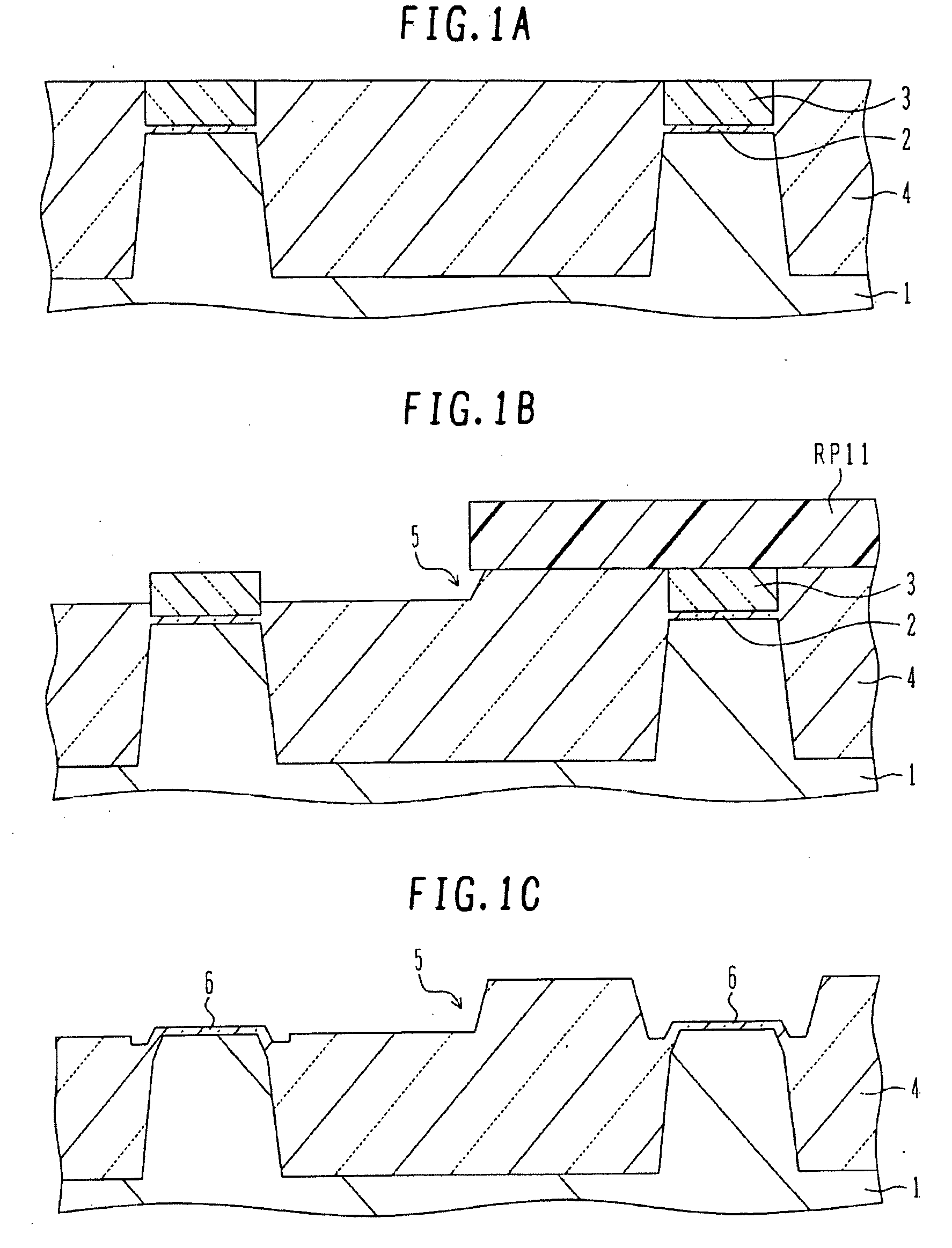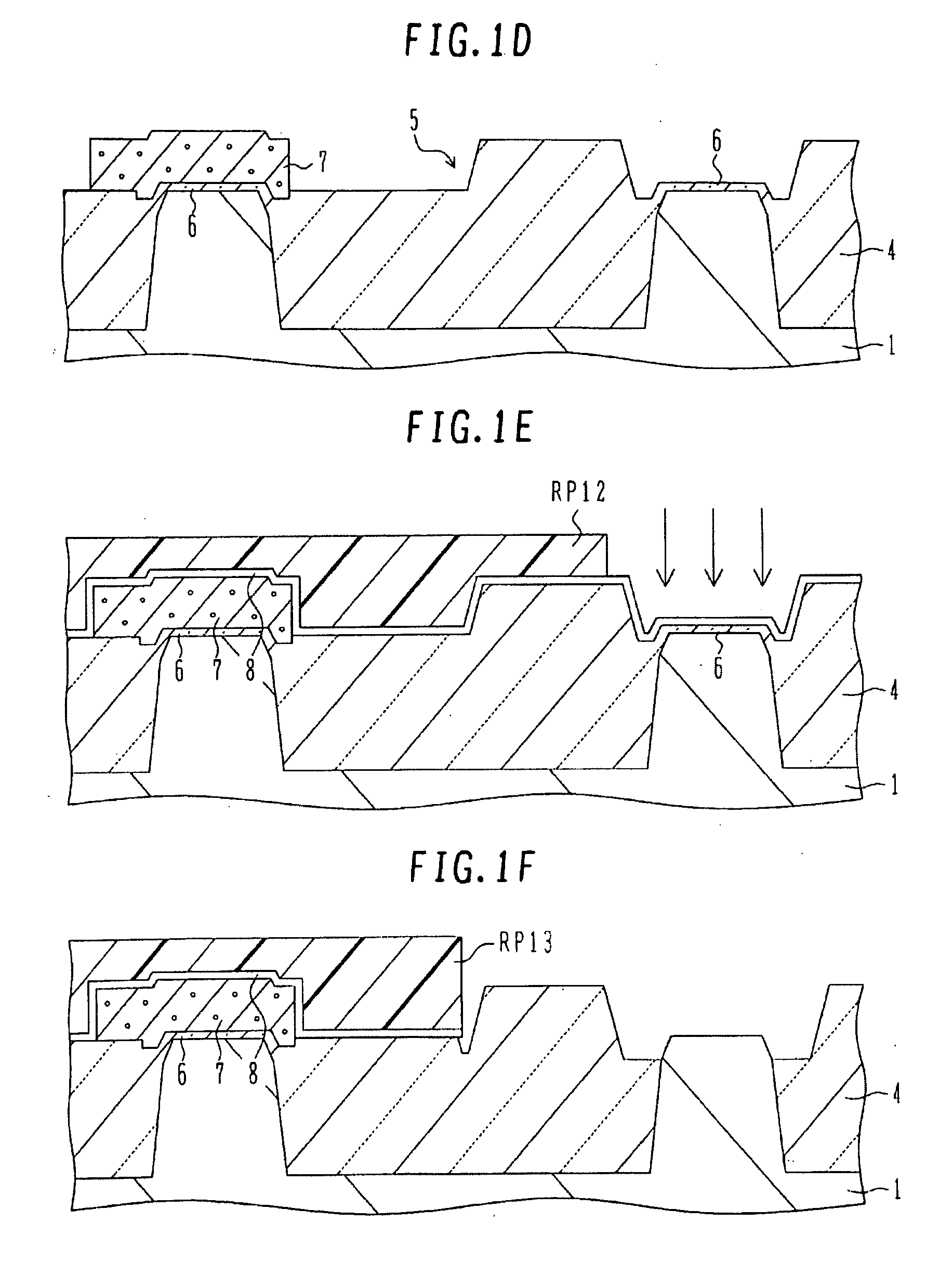Semiconductor device with sti and method for manufacturing the semiconductor device
a semiconductor and semiconductor technology, applied in the direction of semiconductor devices, electrical devices, transistors, etc., can solve the problems of difficult etching of polysilicon layers, difficulty increases, and impede the improvement of integration density, so as to reduce the height difference and increase the margin of photolithography process
- Summary
- Abstract
- Description
- Claims
- Application Information
AI Technical Summary
Benefits of technology
Problems solved by technology
Method used
Image
Examples
first embodiment
[0062]With reference to FIGS. 1A to 1K, description will be made on a method for manufacturing the semiconductor device according to the FIGS. 1A to 1I are cross sectional views illustrating main manufacture processes, FIG. 1J is a plan view showing the shapes of gate electrodes, and FIG. 1K is a cross sectional view of an area between control gates.
[0063]As shown in FIG. 1A, the surface of a silicon substrate 1 is thermally oxidized to form a buffer silicon oxide film 2 having a thickness of, e.g., 10 nm, and a silicon nitride film 3 having a thickness of, e.g., 110 nm is deposited on the silicon oxide film by CVD. By using a resist pattern, the silicon nitride film 3 and silicon oxide film 2 are patterned to leave a mask insulating film pattern made of a lamination of the buffer silicon oxide film 2 and silicon nitride film 3 and having a shape covering the active region. By using the silicon nitride film 3 as an etching mask, the silicon substrate is etched to a depth of, e.g., ...
third embodiment
[0083]A mask for partial etching of STI in the flash memory area may be used commonly as a mask for another process. With reference to FIGS. 3A and 3B, description will be made on a method for manufacturing a semiconductor device according to the
[0084]FIG. 3A is similar to FIG. 1A. The surface of a silicon substrate 1 is thermally oxidized to form a buffer silicon oxide film 2, and a silicon nitride film 3 is deposited on the silicon oxide film by CVD. By using a resist pattern, the silicon nitride film 3 and silicon oxide film 2 are patterned, and by using the silicon nitride film 3 as an etching mask, the silicon substrate is etched to form an isolation trench. A silicon oxide film 4 is deposited by HDPCVD to bury the isolation trench. CMP is performed starting from the surface of the silicon oxide film 4 to remove the silicon oxide film 4 above the surface level of the silicon nitride film 3.
[0085]As shown in FIG. 3B, a resist pattern RP31 for exposing the flash memory area is fo...
PUM
 Login to View More
Login to View More Abstract
Description
Claims
Application Information
 Login to View More
Login to View More - R&D
- Intellectual Property
- Life Sciences
- Materials
- Tech Scout
- Unparalleled Data Quality
- Higher Quality Content
- 60% Fewer Hallucinations
Browse by: Latest US Patents, China's latest patents, Technical Efficacy Thesaurus, Application Domain, Technology Topic, Popular Technical Reports.
© 2025 PatSnap. All rights reserved.Legal|Privacy policy|Modern Slavery Act Transparency Statement|Sitemap|About US| Contact US: help@patsnap.com



